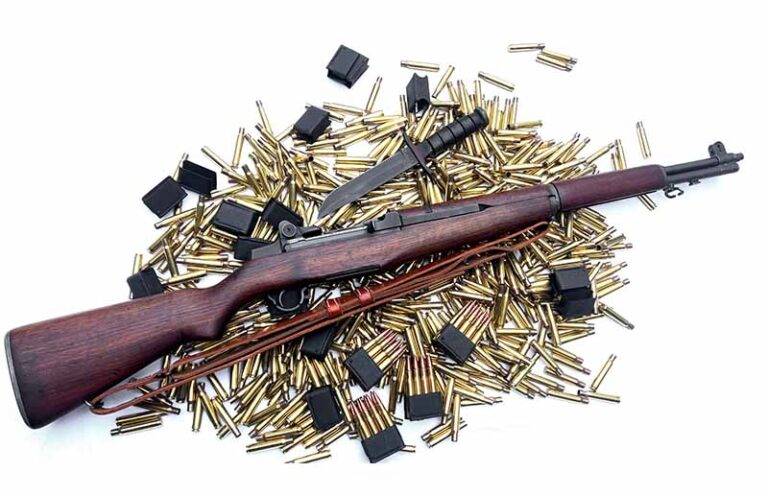
A look back at the venerable M1 Garand, America's storied and stalwart service rifle.
When it comes to guns, there’s certainly fashion that comes and goes. This year, it might be 10mm making a big comeback, or perhaps the 1911 having a slew of new designs hitting the market, making it “relevant” again.
But with that said, the M1 Garand hasn’t been victim to fashion. In fact, it’s one of those rifles that’s always in good taste, no matter where or when it appears. However, things have changed in the M1 world … and not necessarily for the better.
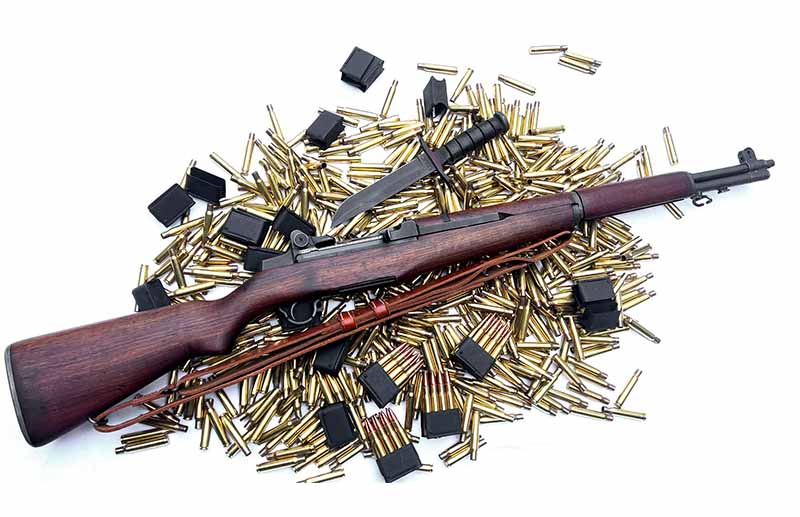
Dried-Up Surplus Stockpiles
Unfortunately for us, we’re in something of the twilight years of the surplus market. When I was a teenager, you could buy most surplus guns for less than $500, sometimes as low as just $50. Granted, that was a lot of money for a kid working fast food, but everything was so plentiful then that it seemed like it would never end.
It’s a fair assessment to say that the vast majority of the surplus market is completely dead these days. Various post-World War II Mauser rifles that sold for $150 are going for upward of $800 today, well outside the range of hobbyists—and frankly outside the interest range for competition shooters and collectors. Guns that once were plentiful are now so heavily picked over that finding a good, pristine example can cost you upward of $1,500 or more … for a Mosin Nagant! The Finnish examples today are commanding a heavy premium, to the point they’re almost impossible to justify for the regular collector. The M1 has limped along for the entirety of this chaos, but it, too, is slowly drying up.
Remarkably, M1 prices have held out considerably well against the fluctuations in the market. Today, they’re still around $1,000, a price they’ve maintained for nearly 15 years. I never believed I’d see a day where something as common as a Mauser or Enfield would sell for more than an M1, but I’ve apparently reached that point in life.
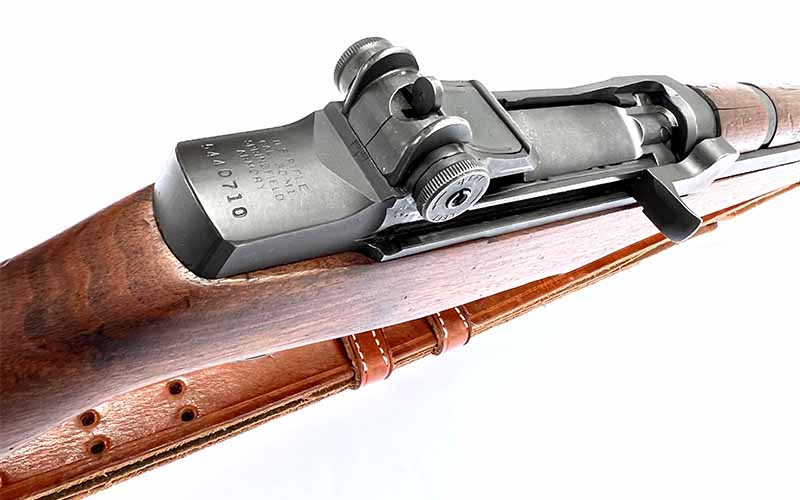
The nature of the M1 sets it apart from the rest. The gun was manufactured in America by Americans, and it’s largely supported by the aftermarket. It’s likely there are more of them around than the rest combined, but there’s really no way to know for sure. What is known is that a point is coming in the near future where prices for base-level, rebuilt M1 rifles will jump. In other words, get your M1 while you can: The gettin’ is good right now.
It could be argued that the M1 is still the most popular vintage rifle available today. The largest reason for this is that there’s a substantial amount of cultural knowledge surrounding it, and it’s still relevant from a defense and hunting standpoint. Young men and women are training as armorers on these guns—the same cannot be said for most other surplus rifles. It’s entirely possible to build a “new” M1 today; many companies make their own parts, stocks, barrels and more. The prevalence of the M1 in this country has made it so that the design will continue to be used well into the future, though that doesn’t mean it’s going to be that way forever.
Collecting The M1 Today
It’s a reality of the surplus market that things just aren’t what they used to be. The rifle featured in this article was bought from a local gun store that had it on consignment. The previous owner was aged out of competing and no longer cared about owning those guns. He mentioned in passing that he didn’t have family who went shooting, and it was best to sell. This rifle is a standard of what you’ll see for gun show rifles and those that you may be able to purchase from another shooter at a CMP event.
While it may seem like a backward approach, plenty of collectors shoot in these competitions, and, depending on where you’re at, a match is usually held every month. If you want a direct line to many opportunities for surplus rifles, simply attend one of these matches and pass out your information to the competitors. The thing about doing this is that it places you in a network of like-minded people. Don’t be surprised when one of your CMP buddies calls you and says there’s a gun you’re looking for at an area store.
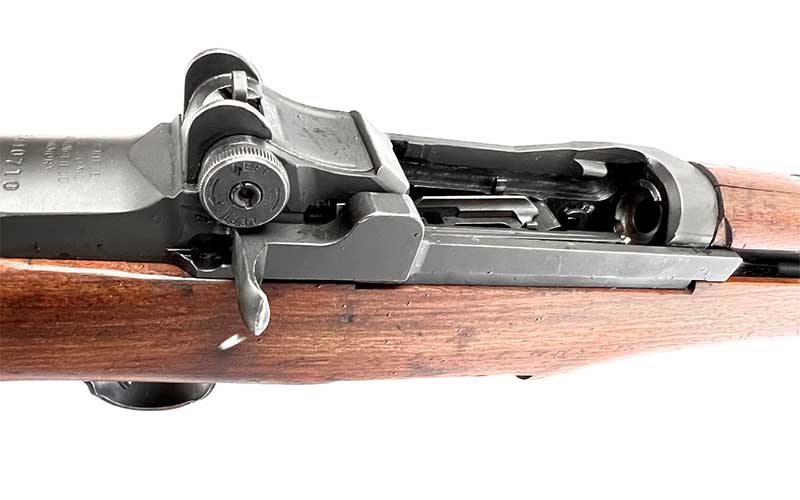
The nature of finding a good M1 these days isn’t a scavenger hunt, but it’s also not as simple as just walking into a store and ordering it. These rifles are quite old and are individuals at this point. Most of them have experienced various degrees of wear and tear over time, and you’ll need to have a careful eye about what you’re looking at. There are very few people out there in the world who have a full, complete matching M1 rifle. If a person is advertising a fully matched gun for less than $2,000, you’re being taken for a ride. What’s more, there’s probably less than a handful of guns in the country that are in original, un-issued condition.
At the very least, what you’re looking for is the receiver of the rifle: The rest of the gun can be stripped down and rebuilt quite easily. A desirable receiver is 90 percent of the sale price on a finished gun, and WWII receivers are universally more valuable than postwar examples—though prewar rifles are the most valuable.
The lion’s share of M1s, numbering in the millions, were all completely stripped down and refurbished over the years. It has become a game among collectors to swap parts not just by manufacturer, but also by month of manufacture. However, there’s no real way to know if the barrel and receiver were made at the same time of day, or simply at the beginning and end of the month. That’s about as fine as it gets as far as detail. A date-matched rifle usually picks up $500 to $1,000 in value.
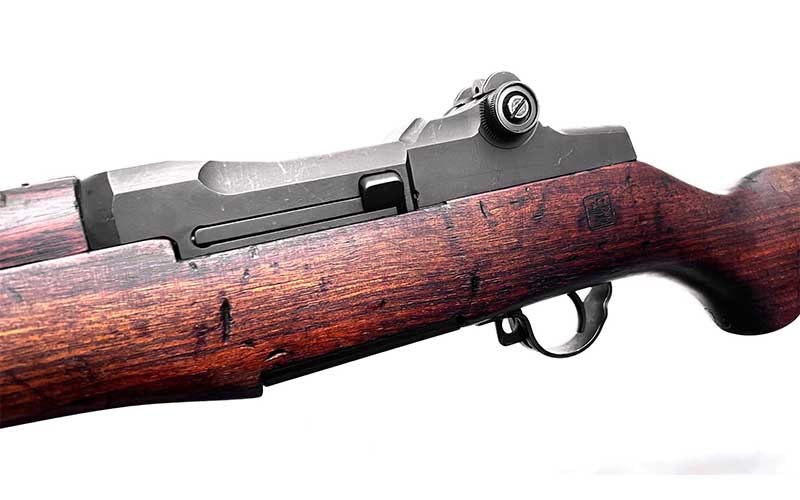
Stocks and small parts aren’t necessarily a good way to look at the value of a rifle, or even into a rifle’s general condition: Great actions are sometimes dressed in mediocre wood and vice versa. Most stocks at this point are going to need to be replaced if you want to shoot in competition. New, clean wood is preferable. But, beware of any M1 at a gun show that looks too good; Birchwood Casey stock finish is cheap … and so is sandpaper.
Also, look at the condition of the action itself. One of my good friends, who worked as an armorer for decades, suggested that the average M1 will go through at least two stocks in its lifetime. Many of the wooden parts on the gun are actually quite thin and easily crack, so few are original to the receiver. Replacing the stock on an M1 is an easy venture, and it can be done largely without tools. Cartouches and stamps on stocks should not be considered a reliable method of dating the rifle, either. Not only are they easily mismatched, but they’re also easily faked.
Currently, many companies make modern parts. For instance, Boyds makes a replacement stock you can sand and finish at your whim, and laminate stocks are also a more durable option. Barrels are available from companies like Criterion, as well as custom manufacturers that appeal to the match shooting crowd. Specialty gun builders, such as Fulton Armory, can build an entire match-quality M1 off of your receiver. What’s better is that they offer multiple packages for your receiver, including options to turn it into a slightly more modern rifle, as well as tuning it specially for the CMP games.

The CMP itself also sells M1s. If you were interested in a road trip, you can simply drive to Camp Perry and leave with an M1. The CMP has sold these rifles for quite some time, although today they’re somewhat picked over. Around 10 years ago, you could find some absolutely pristine examples. Today, most of them look a little bit sorry but can be had for under $1,000. Most of these guns are in mix-and-match but fireable condition, and it will be of service in match shooting, but not necessarily collecting.
Shooting The M1
So, what should you be looking for as far as performance goes with the M1? The rifle, as it’s issued with iron sights, should be able to produce 10 shot groups of 3 inches slung up. If you’re shooting off the bench, cut that number in half. Yes: They’re that accurate. I have an 1896 Swedish Mauser that prints 1.5 inches at 100 yards dating to 1900, and another from 1914 that does 2 inches with the same loads. Most M1903, M1917 and M1 Garand rifles I’ve fired and owned are 3 MOA rifles … or better.

In addition, you’ll need to pay close attention to barrel wear. M1s with original barrels can be rough; if you plan to buy them to shoot, you need to invest in erosion gauges. These gauges measure the physical wear at the throat and muzzle, and you can simply pop them in at a gun show—it takes just a second. You want a gun that runs out at “0,” meaning no real wear. Sometimes, you’ll see a person say, “it’s a 1 at the muzzle and a 2 in the throat.” This means that the throat has a minor amount of wear, but the muzzle is still tight. If you go up past a “3” in wear on either end of the barrel, you’ll probably want to offer a lower dollar amount due to needing a barrel replacement. I’d consider any gun that needs a replacement to be a minimum $200 expense: Take that into consideration as you look to buy.
You’ll also want to check the mechanical properties of the rear sight. You can do this by simply resting your thumb on the peep sight and applying slight pressure against it. Each movement of the windage and elevation drums should be crisp; there should be no slippage under slight pressure. These parts can be replaced, so if they’re damaged and are on a valuable receiver, it might be worth it anyway just to go ahead and buy.
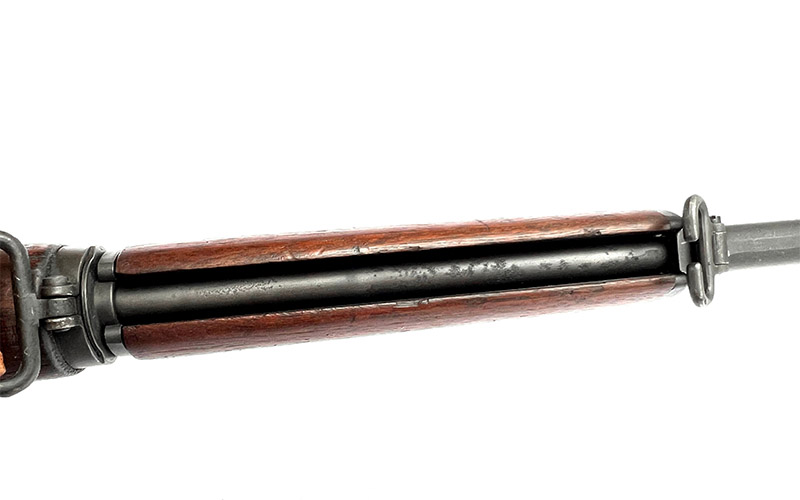
If you’re trying to shoot CMP or other service rifles, you’ll need to check the rules on bedding the stock. Bedding an M1 can really help accuracy; however, as-issued matches won’t allow it, but open division usually does. You can sneak past these rules a bit in as-issued matches by buying an oversized stock. You will have to finish the inlet and exterior yourself, but you can essentially fit it exactly to your gun and achieve similar results to glass bedding.
Ammo And Loads For The Garand
As of this writing, several companies make M1 Garand-specific loads. You need to keep the pressure down when shooting these guns—modern .30-06 is too powerful for it in as-issued form. You can get an adjustable gas block to account for modern ammo, but there’s no need to put so much wear and tear on an old warhorse.
Hornady makes an excellent M1 match load (product number 81171), featuring the 168-grain ELD match bullet. This is an excellent target load and has produced some of the best scores at Camp Perry. I truly enjoy what Hornady did with this; it really is the best M1 ammo available for shooting scores.
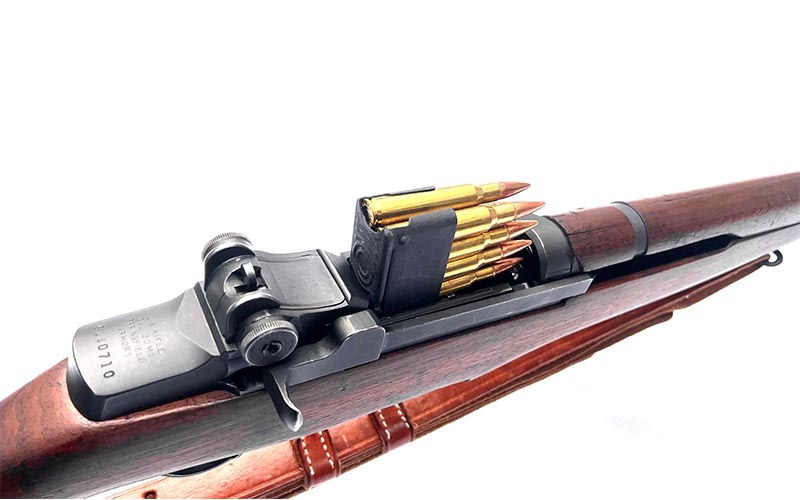
Federal makes an excellent 150-grain FMJ load for the M1 under the American Eagle brand. I have shot this ammo often in the past but haven’t been able to find it for some time. As of this writing, it was listed simply as “unavailable” on the Federal site, but I’m hoping to get some more in the near future if the ammo market ever cools down enough for companies to make anything other than 9mm and 5.56 NATO.
Sellier & Bellot has a great M2 ball load that’s safe in the M1 rifle. The load isn’t as popular, but it’s at least in stock and readily available … and it has proven to be very accurate in some rifles. I’ve noticed it’s a bit pickier and has a bit more thump to it as opposed to the Hornady or Federal, both of which are mild in the M1.
Also, Winchester announced a new M2 ball load at SHOT Show 2023. I’m excited there are companies making strides to come out with ammo support of the M1, even when things are so volatile in the industry.
Editor's Note: This article originally appeared in the March 2023 issue of Gun Digest the Magazine.
More On The M1 Garand:
- M1 Garand Ammo: What Should You Shoot in Your M1?
- M1 Garand Bayonet for the Ultimate Survival Gun
- M1 Garand Clip Loading Basics and Troubleshooting Tips
- The Ever Popular And Collectable M1 Garand
- The M1: America's Original Battle Rifle

Next Step: Get your FREE Printable Target Pack
Enhance your shooting precision with our 62 MOA Targets, perfect for rifles and handguns. Crafted in collaboration with Storm Tactical for accuracy and versatility.
Subscribe to the Gun Digest email newsletter and get your downloadable target pack sent straight to your inbox. Stay updated with the latest firearms info in the industry.

![Best Concealed Carry Guns In 2025 [Field Tested] Wilson Combat EDC X9S 1](https://gundigest.com/wp-content/uploads/Wilson-Combat-EDC-X9S-1-324x160.jpg)


![Best 9mm Carbine: Affordable PCCs [Tested] Ruger Carbine Shooting](https://gundigest.com/wp-content/uploads/Ruger-Carbine-Shooting-100x70.jpg)
![Best AR-15: Top Options Available Today [Field Tested] Harrington and Richardson PSA XM177E2 feature](https://gundigest.com/wp-content/uploads/Harrington-and-Richardson-PSA-XM177E2-feature-100x70.jpg)

I bought one in 97 for $367. Love it. I bought a second rough stock and constructed a pistol grip stock for it. It makes it a bit easier to control in rapid fire. If you’re concerned about the possible thinning of the wrist, I drilled a long hole, filled it with epoxy, and screwed in a 7-inch steel rod. The sock was considerably dented. I steamed some out and coated the stock with bed liner.